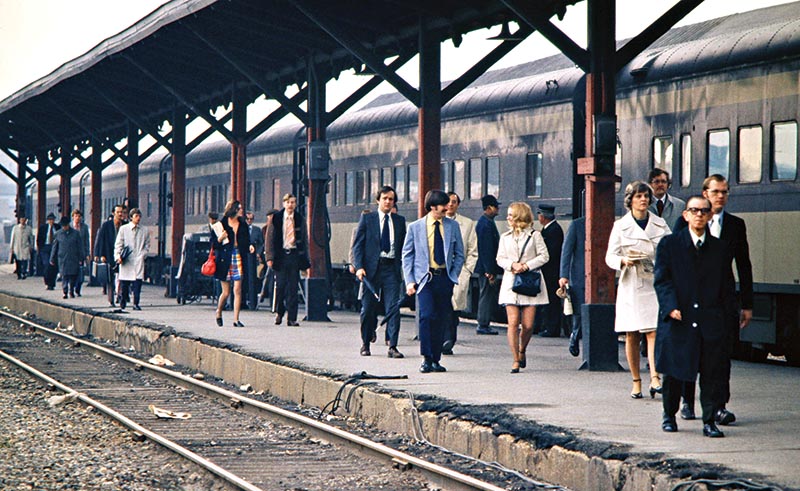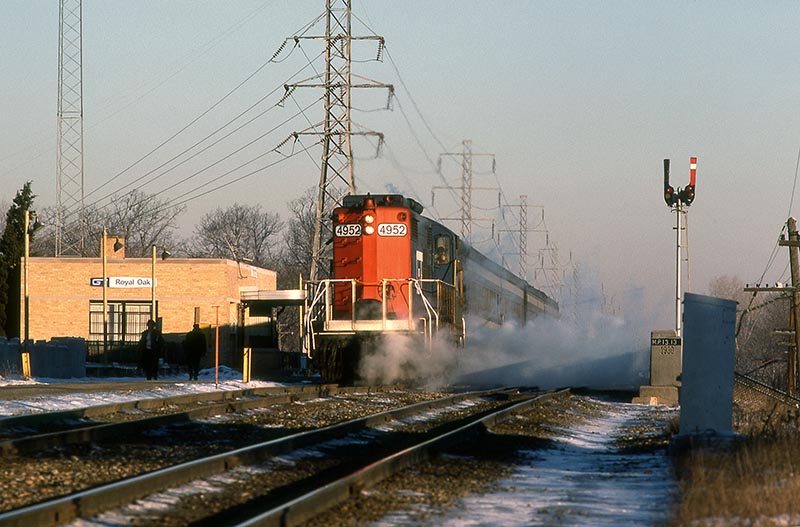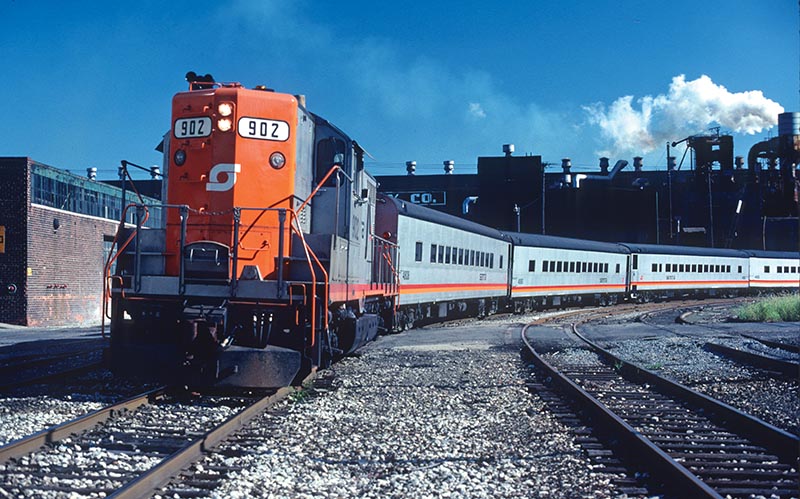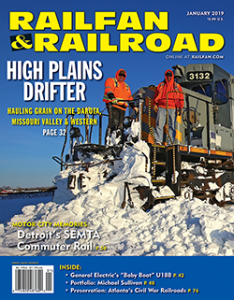My memories of the Grand Trunk Western commuter operations go back to my early childhood when my mother would take me to watch the evening rush at Royal Oak, Mich., during the last days of steam operations in 1960. Hooked on trains at an early age, my interest in GTW continued through the transition from private to public operation, followed by its slow decline and inevitable death.
While train service to Pontiac was offered as early as 1838, the first passenger service to the riverfront was operated by the Detroit & Pontiac Railroad in 1852. Following a devastating fire, a new station at the foot of Brush Street was built in 1882 and was shared with the Wabash until 1893 and the Lake Shore & Michigan Southern (New York Central) until 1908. By 1928, it became the primary downtown station for all Grand Trunk Western passenger trains. Commuter service to the northern suburbs was introduced in August 1931. A freight house and small yard also supported a car ferry operation crossing the Detroit River to Windsor, Ont. Notable as the last holdout for regularly scheduled main line steam service in America, GTW placed boiler-equipped diesels in service to take over the Detroit commuter runs in March 1960. By 1968, GTW was operating three daily round-trips between Detroit and Pontiac, 26 miles to the north on the Holly Subdivision.

The old green-and-gold heavyweight coaches were in use until around 1970 when the GTW purchased a number of surplus streamlined cars from Union Pacific. These were refurbished and assigned on the fast new train between Chicago and Detroit called the Mohawk. They were also used on the Detroit–Durand connection for the Maple Leaf. Following the formation of Amtrak in 1971 and discontinuance of these trains, the coaches were reassigned to the Detroit commuter runs, finally replacing the old heavyweight battleships. Despite this minor improvement, greater changes were on the horizon.
Despite strong ridership, by 1971, the GTW estimated yearly losses at nearly $250,000. However, the railroad could not secure the approval of the Michigan Public Service Commission to either raise fares or cancel service. While GTW’s other trains were cut, the commuter runs were considered ineligible for takeover by Amtrak and remained in private operation after May 1, 1971.
In November 1973, Brush Street Station was torn down to make way for the new Renaissance Center high-rise development, which opened in 1977. At first, the platforms were relocated just 660 feet east of the old station. A second relocation in 1974 moved the platforms north into a portion of the former freight yards along Franklin Street. Rush hour trains were met by buses operated by Detroit Department of Transportation to bring commuters to their final destinations.

From Private to Public
In 1973, Grand Trunk Western reported an average of 1,550 daily riders on its three trains, a figure that jumped up to 2,100 by 1974. The railroad considered eliminating the stops at Ferndale and Pleasant Ridge in an effort to speed up service, but the closure was protested by residents of northside Detroit.
The Michigan legislature passed the Metropolitan Transportation Authorities Act of 1967, which included the creation of South Eastern Michigan Transportation Authority (SEMTA). The new agency was created to take over several local private transit operators in the six counties surrounding and including Detroit. SEMTA began subsidizing one-third of the commuter train losses in 1974. The subsidy increased to two-thirds in 1977, with SEMTA formally acquiring the GTW rolling stock and taking full responsibility for operations in early 1978…




